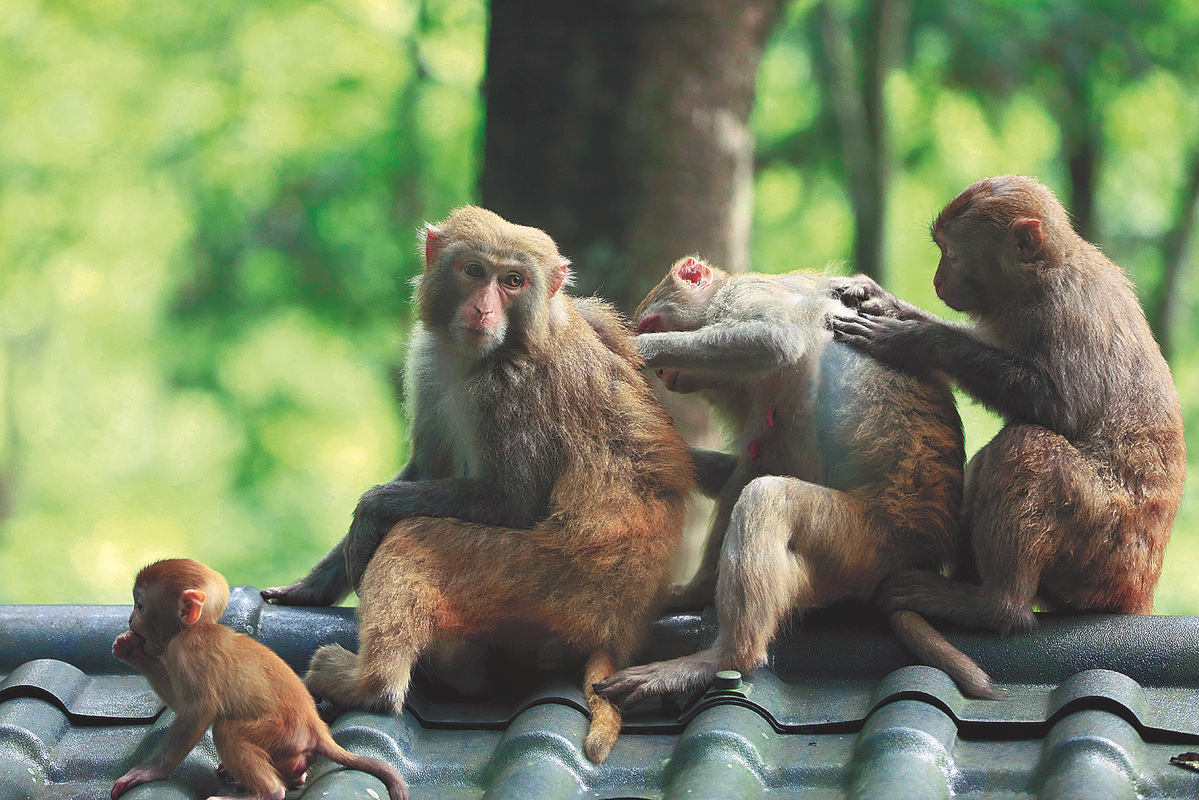
A family of wild macaques rests on the roof of a building in
Wulingyuan scenic area in Zhangjiajie, Hunan province, in July 2020. WU
YONGBING/FOR CHINA DAILY
Chinese scientists have discovered that mammalian species that live in groups generally live longer than those who live alone.
Mammals show a 100-fold variation in maximum life span, ranging from less than two years in shrews to more than 200 years in bowhead whales.
This gap has been the focus of many scientific studies aimed at finding out why.
Mammals display the most successful adaptive radiation and the most complete physiological function. They exhibit more complex social behavior than other animals and have disparate forms of social organization. Females carry their babies in their wombs and produce milk to feed their young.
"Normally, the social organization of mammals is divided into three basic categories — solitary, pair-living and group-living," said Zhou Xuming, a researcher from the Institute of Zoology at the Chinese Academy of Sciences.
In previous studies of social organization and life span in mammals, scientists tended to focus on different groups within a single species.
"The results of previous studies, however, were often related to the particular life history of specific species, and their universality was limited," Zhou said.
Unlike previous research, the research undertaken by Zhou's team performed a comparative phylogenetic analysis (analysis of diversification) of about 1,000 mammalian species including African elephants, ring-tailed lemurs, horseshoe bats and dugongs, based on the three states of social organization and longevity, according to a study published in the journal Nature Communications.
In addition to extensive studies of about 1,000 mammalian species, the researchers also conducted analyses on 94 of the species.
"We found 31 genes and related pathways involved in hormones and immunity," Zhou said.
He noted that the expression levels and evolutionary rates of the genes and pathways were correlated with social organization and longevity, and may be involved in the association between social organization and longevity.
For example, solitary northern anura shrews are similar in weight and in other aspects to group-living horseshoe bats.
However, the longest life span recorded among the shrews is two years, while the bats can live as long as 30 years.
The research results also demonstrated that the transition rate from a short-lived state to a long-lived state is higher in group-living than non-group-living species, also supporting the correlated evolution of social organization and longevity.
Living in groups reduces the risk of predators or experiencing hunger, and at the same time, is also beneficial in helping injured, pregnant and elderly mammals overcome difficulties.
"There is an association between the maximum life span of mammals and social organization, but it is not a complete coevolution," Zhou said.
The factors affecting the life span of mammals are very complex, and social organization is not the only factor.
Source: Xinhua








